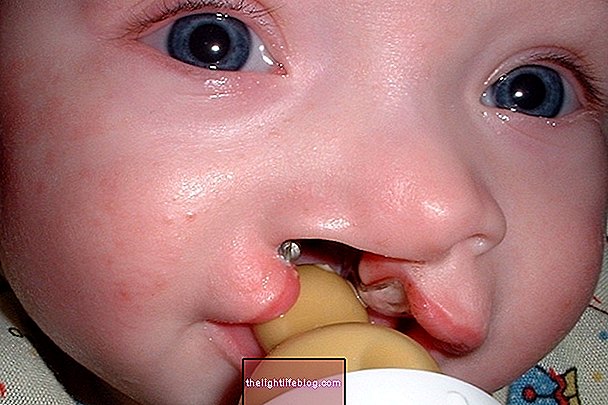The tracheostomy is a small orifice that is made in the throat, over the region of the trachea to facilitate the entry of air into the lungs. This is usually done when there is an obstruction in the air pathway caused by tumors or inflammation of the throat after surgery, for example, and therefore can be maintained only for a few days or for life.
If it is necessary to maintain the tracheostomy for a long time, it is important to know how to take care properly, to avoid serious complications such as asphyxia or even a possible pulmonary infection. Care can be taken by the caregiver, when the person is bedridden, or by the patient himself, when he feels capable.

What to do to treat tracheostomy
To avoid the risk of serious complications it is important to keep the cannula always clean and without secretions, as well as to change all the components according to the doctor's instructions.
In addition, it is essential to observe if the tracheostomy site is red or swollen, because presenting these signs may indicate the onset of an infection, which should be immediately reported to the physician.
1. How to keep the cannula clean
To keep the tracheostomy cannula clean and free of secretions, which can lead to asphyxiation or infection, you should:
- Wear clean gloves;
- Remove the inner cannula and place it in a container with soap and water for 5 minutes;
- Vacuum the inside of the external cannula with a vacuum cleaner. If you do not have a secretion aspirator, 2 mL of saline can be injected into the outer cannula, causing coughing and helping to remove accumulated secretions in the airways;
- Place a clean, sterile inner cannula;
- Rub the internal, dirty cannula, inside and out, using a sponge or a pipe cleaner;
- Put the cannula dirty in boiling water for about 10 minutes;
- Dry the cannula with sterile dressings and store in a container disinfected with alcohol, to be used in the next exchange.
The outer cannula of the tracheostomy should only be replaced by a health professional, as there is a great risk of suffocation when it is done at home. Therefore, you should go to the hospital at least once a week to change the entire set of tracheostomy, or as directed by your doctor.
2. How to replace the cushioned surface


The cushioned surface of the tracheostomy should be changed whenever it is dirty or wet. After removing the soiled cushioned surface you should wipe the skin around the tracheostomy with a little saline and pass some unscented moisturizing cream.
To place a new cushion, you can use your own tracheostomy cushions, as shown in the first image, or use 2 clean cushions with a cut at the top, as shown in the second image.
How is the tracheostomy performed?
The tracheostomy is done through surgery in the hospital with general anesthesia, although in some cases the doctor may also choose local anesthesia, according to the difficulty and duration of the process.
A small cut is then made in the throat to expose the trachea and a new cut is made in the cartilage of the trachea to allow passage of the tracheostomy tube. Finally, in a first phase or case the person only needs the tracheostomy in the hospital, machines are attached to help breathe.
Although you can go home with a tracheostomy, this procedure is usually more used in people with more severe problems who need to be hospitalized for a long time in the ICU, for example.
Warning signs to go to the doctor
Some signs that indicate that you should go immediately to the hospital or emergency room are:
- Clogging of the external cannula by secretions;
- Accidental release of the external cannula;
- Expectoration with blood;
- Presence of signs of infection, such as redness or swelling of the skin.
When the patient is feeling short of breath, remove the inner cannula and clean it properly. However, if the condition persists, go to the emergency room immediately.



























